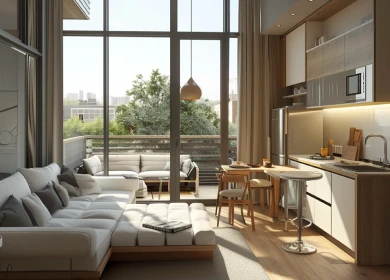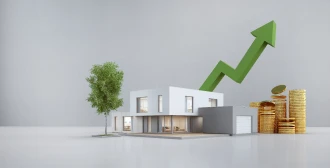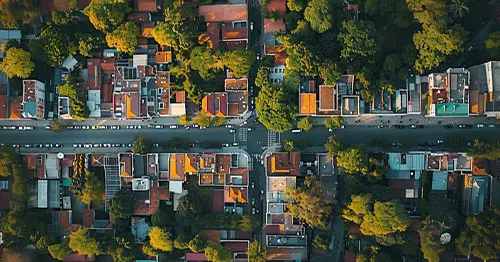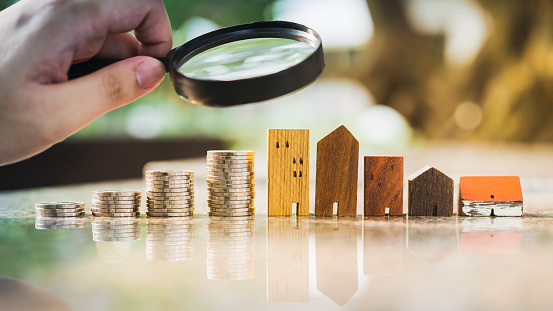Updated: 18 Nov, 2024
Is the tide turning for first home buyers?
With interest rates still at record lows and the pressure on investment lending continuing, pockets of the real estate market are looking brighter for first home buyers (FHBs) for the first time since 2010.
That’s according to QBE’s Australian Housing Outlook 2018-2021 report, which found that lending to FHBs has risen by almost 30% over the 12 months to June 2018, with home loans in New South Wales alone up 74%.
Where are these opportunities and what can first-time buyers expect in their location over the next three years?
Sydney
House prices are expected to bottom out over 2019/20, around 11% below the market peak in 2016/17.
This has been driven by the two-prong effect of:
- First home buyer incentives, such as increasing grants, tax concessions and stamp duty exemptions.
- Lending restrictions on investment and interest only loans.
“We are now seeing the predicted softening in both the Sydney and Melbourne markets after many years of growth,” QBE CEO Phil White said.
“First time home buyers are surging back into these markets replacing some of the demand left by retreating investors.”
Essentially, first home buyers are being given a fighting chance against investors and even second home buyers who can leverage years of equity to complete a purchase.
What to avoid
Inner city apartments and off the plan purchases.
Middle ring suburbs such as Strathfield, Parramatta, Auburn and Hunters Hill have seen vacancy rates increase to 2.8% in the June quarter alone and most of this has been driven by an increase in unit construction.
Outside of Sydney, what was once considered an attractive investment opportunity may no longer be the case for Wollongong, with median prices falling by 2.8% (to $734,900) largely due to an oversupply of construction activity.
What may be a good buy
Outer Sydney suburbs, such as the Hills district and Western Sydney, have seen a moderate decline of 2.8% over the 12 months to June 2018 so it’s still a strong performing market, comparatively.
The other benefit is that you’ll have a better chance at finding a property that’s below the $650,000 threshold for the stamp duty exemption.
Regionally, Newcastle is solidifying itself as a beacon of affordable housing coupled with employment opportunities in the agriculture and tourism industry.
If migration rates from Sydney and the completion of infrastructure projects continues, it is forecast that Newcastle’s median house price will grow 7% to $653,000 by 2021.
Likely future prospects
A number of housing projects are expected to be completed over 2018/19 but then supply is expected to slowdown.
QBE is forecasting 2% growth, which will bring the median Sydney house price to $1.09 million by 2021.
If you’re looking to take advantage of the Sydney slowdown and you don’t quite have your savings together, there are no deposit home loan solutions available.
Don’t let a great opportunity pass you by!
Call 1300 889 743 or fill in our free enquiry form today to speak with one of our mortgage brokers.
Discover more about the Sydney market on page 10 of QBE’s report.
Brisbane
What to avoid
The surge in apartment completions, especially in Inner Brisbane, has caused a significant oversupply in the unit market so steer clear of off the plan purchases.
To put it into context, average completions in the four years to June 2018 are up by 37% compared to the previous four-year period.
With unit prices falling, banks see this as a massive risk and are less likely to approve your home loan or will restrict your borrowing power by the lowering the acceptable Loan To Value Ratio (LVR).
It’s forecast that unit price growth will fall by 5.1 per cent by 2021 thanks also in part to low migration numbers, both from overseas and interestate.
What may be a good buy
As a whole, the Brisbane market is in oversupply mode but there are a couple of areas showing great opportunity.
House price growth has been positive (2.9%) in outer Brisbane surburbs like East Ipswich, Barellan Point and Karalee while Middle Brisbane has only seen a decline of 0.8% so there’s still an opening to snatch up a bargain.
Likely future prospects
Brisbane will continue to stay significantly more affordable than its east coast cousins Sydney and Melbourne, so long as apartment oversupply remains high.
The report forecasts that the Brisbane median house price will grow 11% by 2021 but it’s likely this won’t happen till the end of this 3-year cycle.
Find out more on page 18.
Melbourne
What to avoid
Like Sydney and Brisbane, supply is far outstripping demand when it comes to new apartments, with unit price growth expected to fall by 3% in 2018/19.
Specifically, Melbourne’s inner ring has seen prices fall by 24% since the start of 2018.
What may be a good buy
Investor activity has decreased but the population has risen and home buyers are taking advantage of low interest rates.
Melbourne’s outer suburbs like Armstrong Creek, Tarneit, Greenvale and Mernda are generally cheaper and prices have remained fairly stable, growing 6.2% over the 2017/18 year.
Heading to regional Melbourne, Ballarat is attracting first home buyers who work in the Melbourne CBD and will soon benefit from the Ballarat Railway Precinct redevelopment.
The median house price is forecast to rise a cumulative 6.9% to $385,000 by June 2021.
The Geelong median house price began to decline in June 2018 quarter partly due to the plug being pulled on car manafacturing.
New dwelling development will see the median house price rise 2.6% in 2018/19 but the Geelong market will likely bottom out over 2019-2021.
Likely future prospects
What the Melbourne property market has long had on its side is strong migration rates answering the supply call.
It’s forecast that population growth will slowdown over the next three years.
By the June quarter of 2019, the median house price is predicted to fall to $820,000, which is around 8.4% lower than the December 2017 quarter.
This slowdown in growth is expected to continue until the end of June 2021 so more affordable housing for first home buyers in Melbourne may be on the horizon.
Find out more on page 14.
Adelaide
Adelaide’s economy may be facing woes due to a slowdown in the manufacturing industry but the city has experienced consistent moderate growth over the past few years.
What to avoid
Inner city Adelaide.
What may be a good buy
Middle and Outer Adelaide has seen growth of 3.6% and 3.3%, respectively.
Likely future prospects
House prices are forecast to grow by 12% in the next three years to reach a median price of $555,000.
Unit prices are expected to grow by 6% to a median price of $400,000.
Find out more on page 29 of QBE’s report.
Perth
After the collapse of the resources sector, Perth house prices have fallen by 12% since the June quarter of 2014.
There has since been minor increases to the population and improvements in migration rates but not enough to significantly improve the market outlook.
What to avoid
Outer Perth suburbs like Wannaroo and Kwinana has shown a median house price decline of 2.6% over the 12 months to June 2018.
What may be a good buy
Unit prices are predicted to decline over 2018/19 but then show signs of improvement over the following two years until the end of June 2021 (the median price is forecast to increase to $405,000).
East Fremantle, Stirling and other middle Perth suburbs have seen the most drastic improvement in median house prices, growing 1.9% over the 2017/18 year.
Likely future prospects
By June 2021, the median house price is expected to reach $550,000, which is 5% higher than June 2018 levels.
Discover more on page 25.
Hobart
What may be a good buy
Over the past 2017/18 years, Brighton (17.3%), Glenorchy (14.5%), Kingborough (10.9%), Clarence (11%), Sorell (6.4%) and Hobart City (6.3%) have seen increases to their median house prices.
The good news is that inner Hobart suburbs are showing some signs of slowing so it’s a golden opportunity for first home buyers to get their foot on the ladder.
Likely future prospects
By June 2021, Hobart’s median house price is expected to reach $520,000, almost 8% higher than current levels.
Find out more on page 32.
Canberra
What may be a good buy
While there is an oversupply of inner city units, Canberra’s median house price increased by just 0.7% in 2017/18.
There is signficant room to grow all across Canberra, according to the report.
Likely future prospects
Predicted 10% growth in median house prices over the next three years to $745,000.
Find out more on page 34.
Darwin
What to avoid
By June 2021, the median unit price is expected to reach $365,000 (30% below the peak in 2014).
Off the plan units are particularly volatile in the Northern Territory and may be best avoided.
What may be a good buy
The Northern Suburbs (-6.5%) and Palmerston (-7.6%) saw smaller declines over the 12 months to June 2018 compared to inner Darwin suburbs (-12.5% as a whole) like Hidden Valley, Larrakeyah, Stuart Park and The Gardens.
Likely future prospects
The median house price is forecast to increase by 6% to $530,000 by June 2021.
Find out more on page 37.
Will interest rates rise?
Some of the major banks have begun to increase variable interest rates “out-of-cycle” or in lieu of the Reserve Bank of Australia (RBA) official cash rate.
The cash rate has remained at 1.5% since August 2016 but the cost of funding for the banks has risen steadily since the Global Financial Crisis (GFC).
QBE is forecasting that the RBA rate will lift to 2.00% by June 2021 but, as we’ve seen, it’s become ever more inconsequential as to whether this has any impact on banks keeping rates at bay.
The good news is that you can still qualify for a significantly discounted interest rate if you can present a strong application and apply with the right lender.
Speak with one of our experienced mortgage brokers because we have strong relationships with almost 40 Australian banks and second-tier lenders.
Disclaimer
This article is general information only and shouldn’t be considered financial or investment advice.





